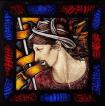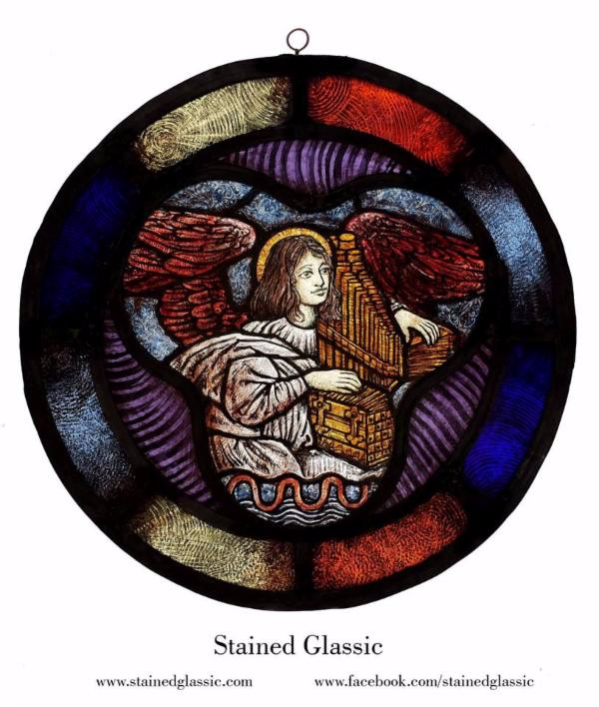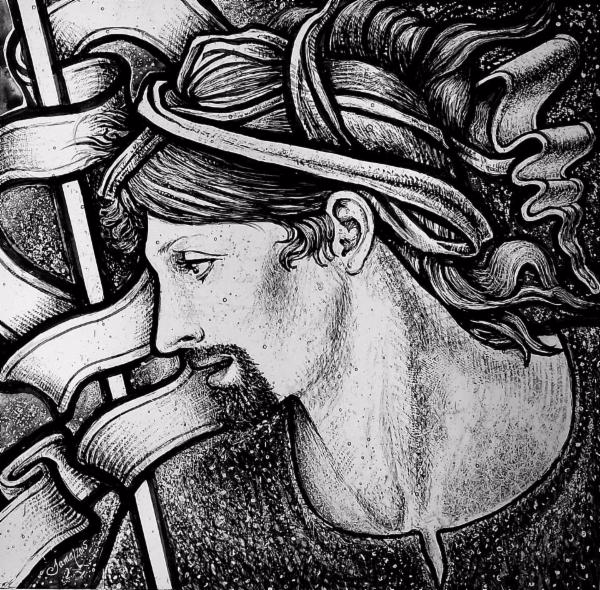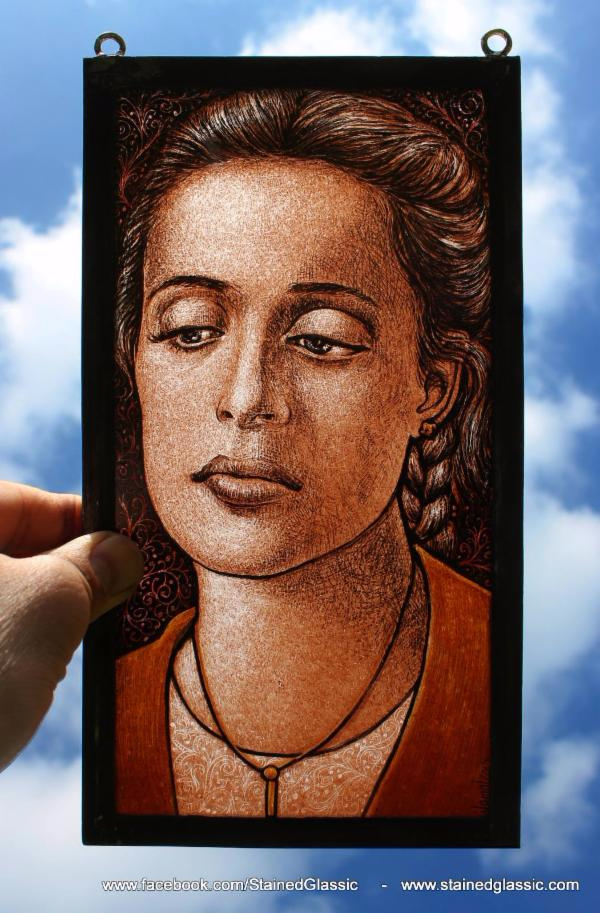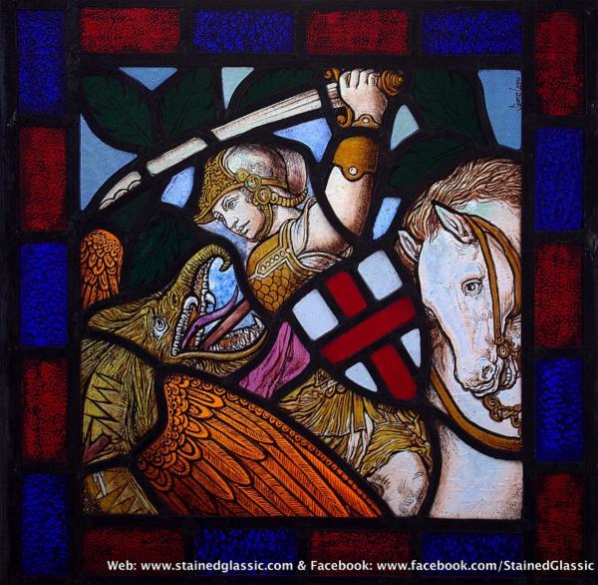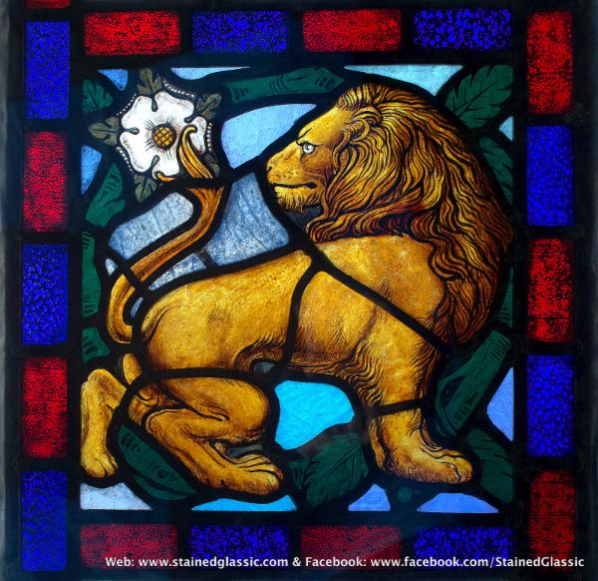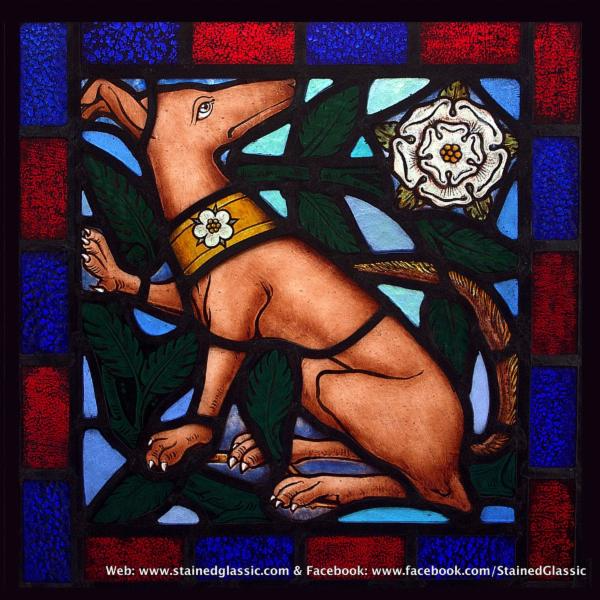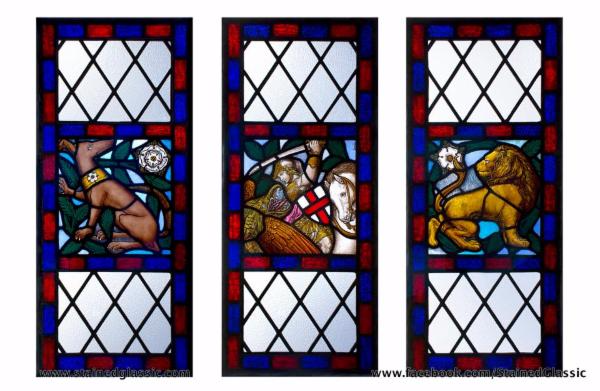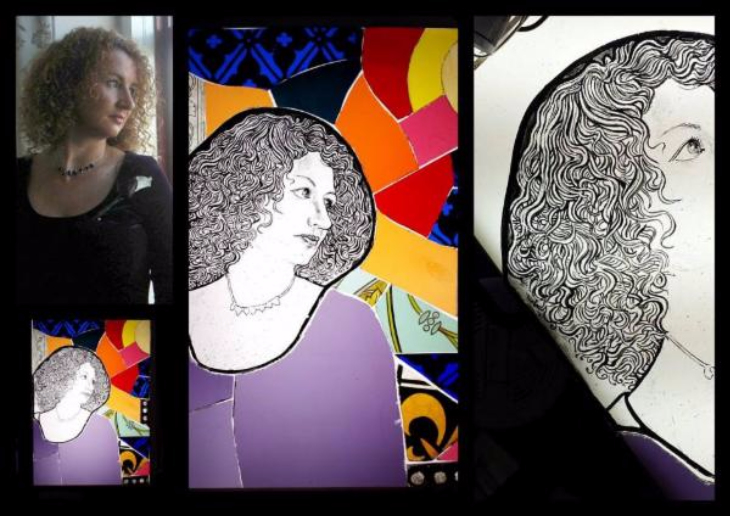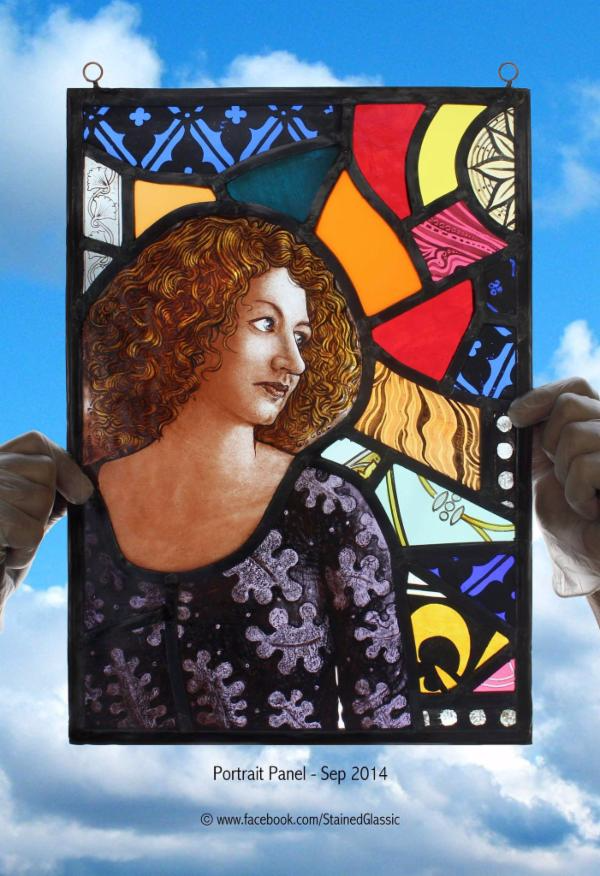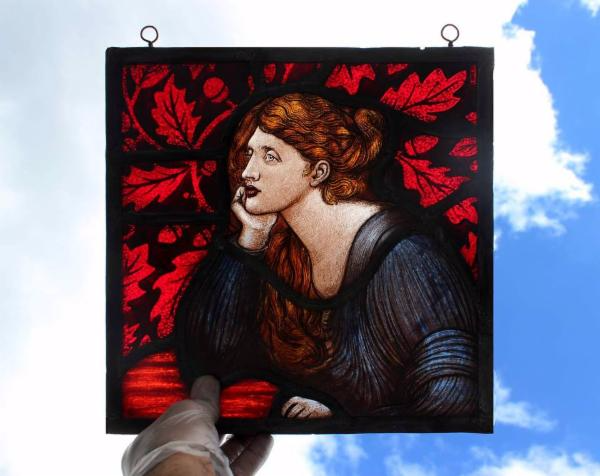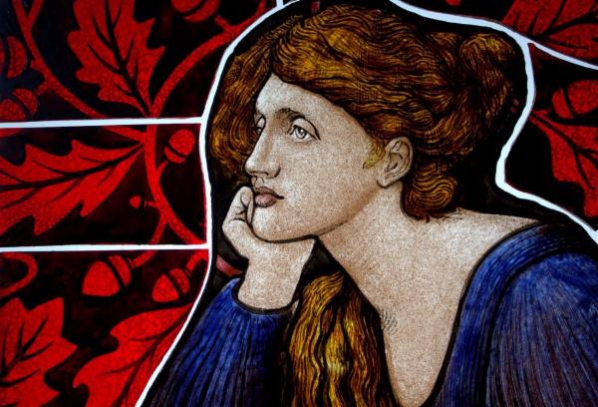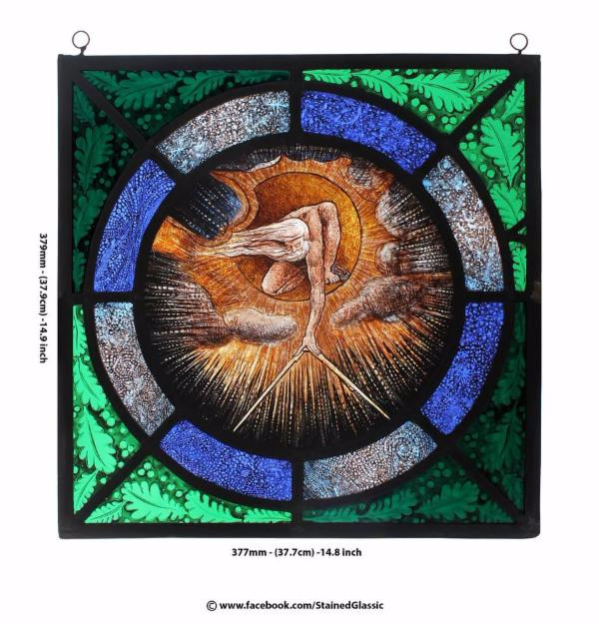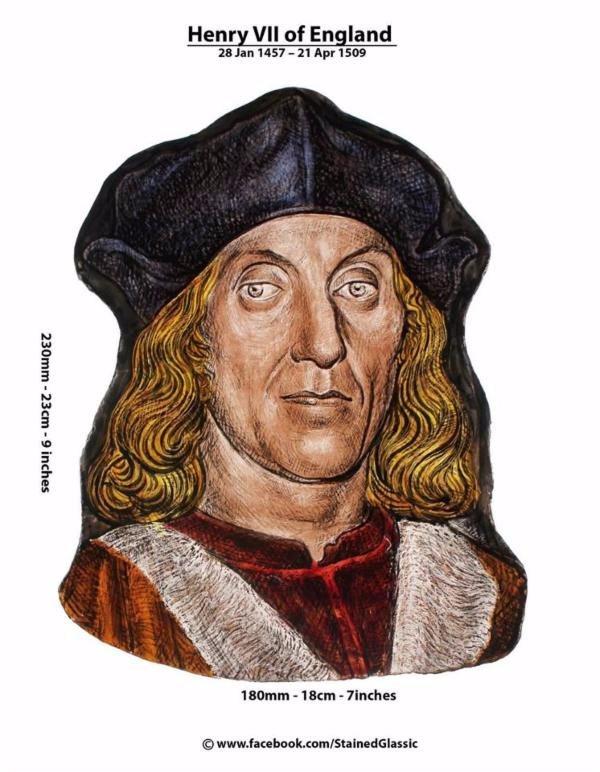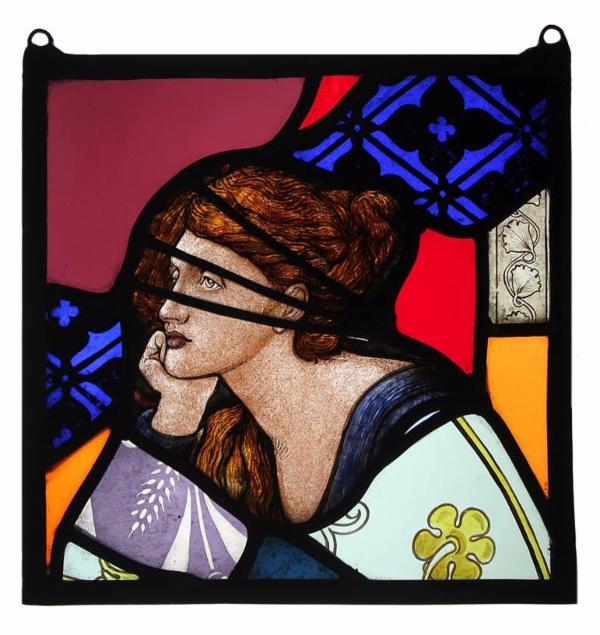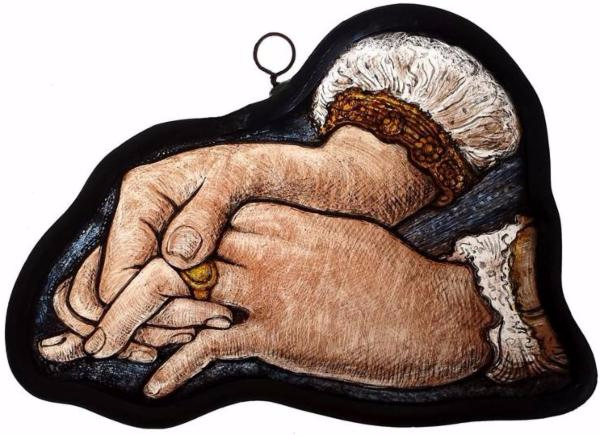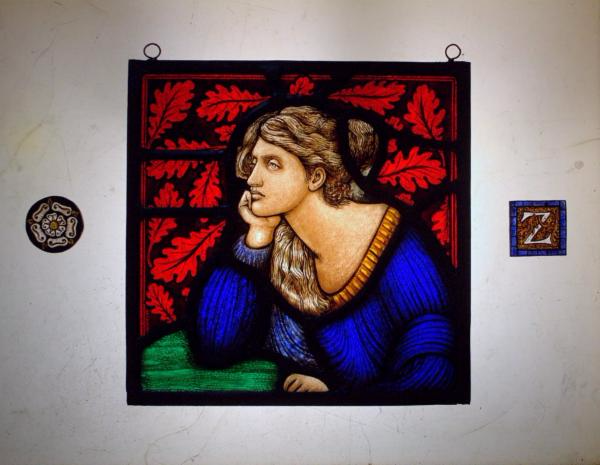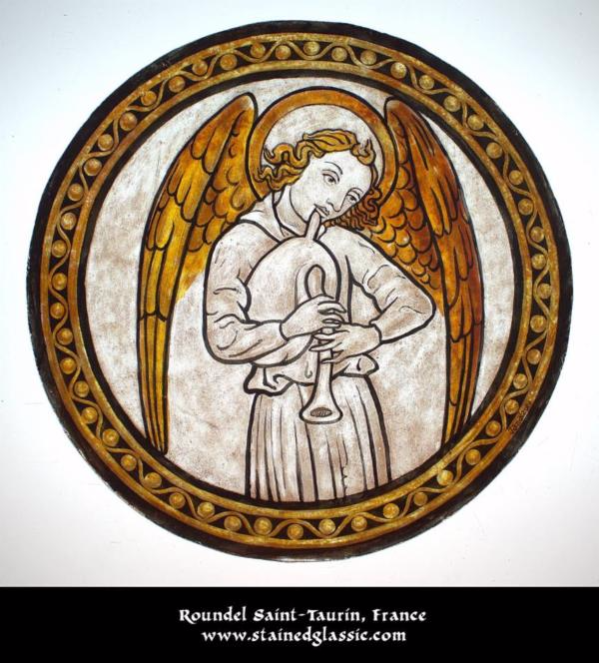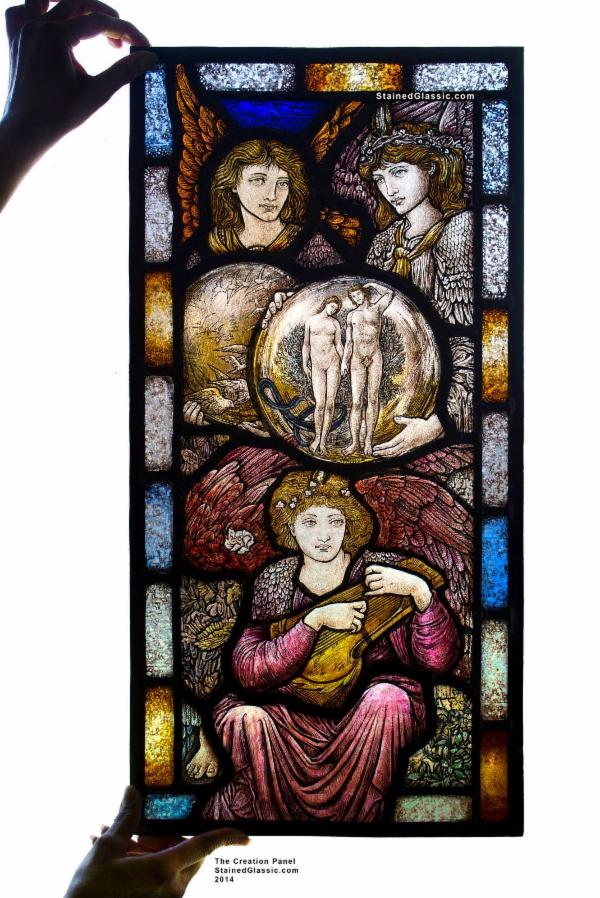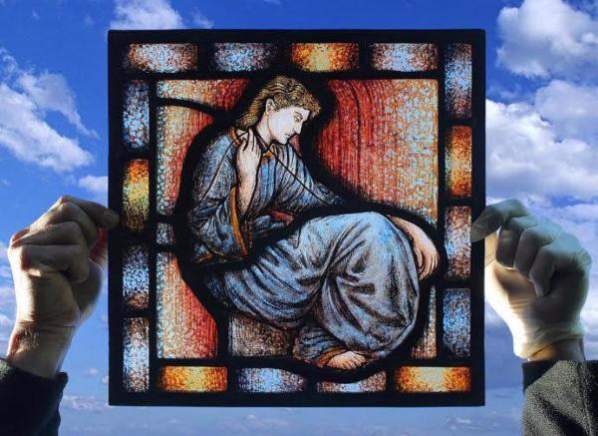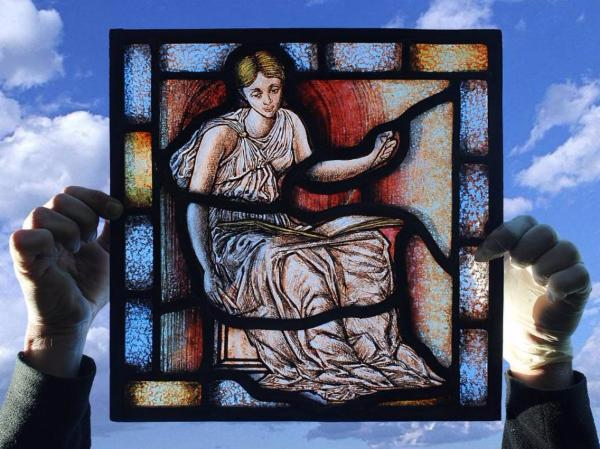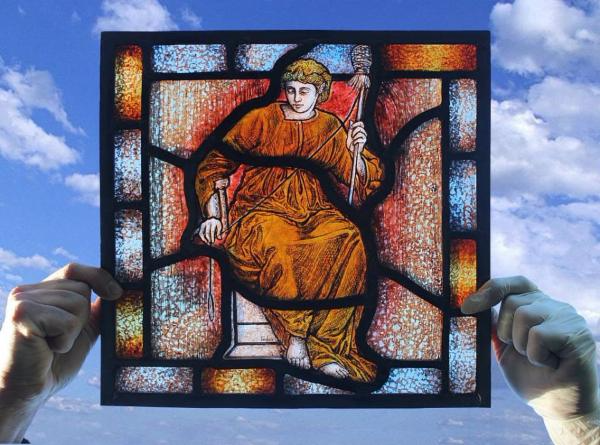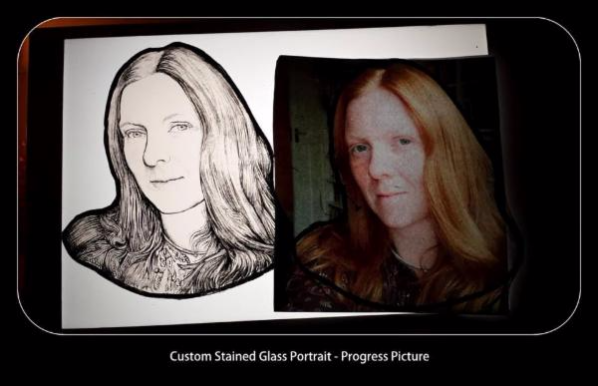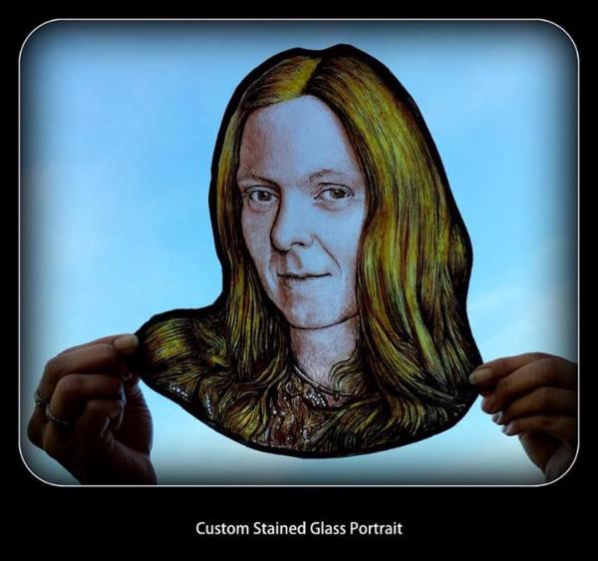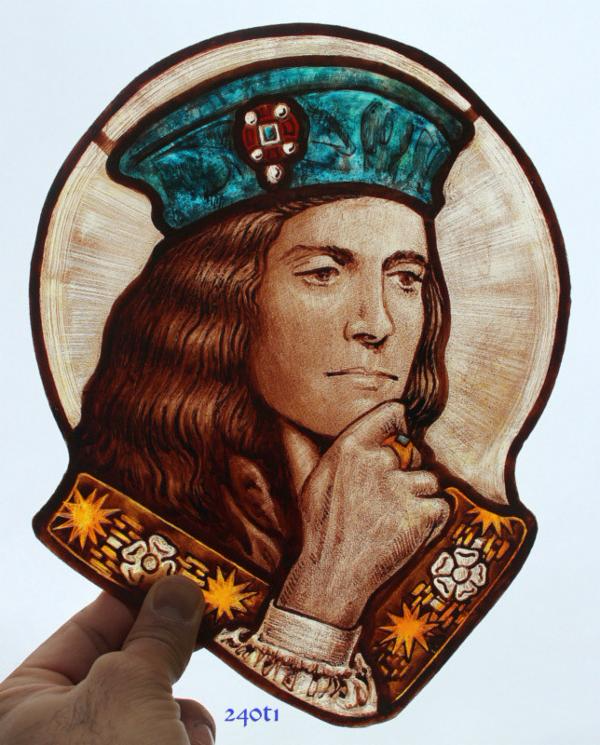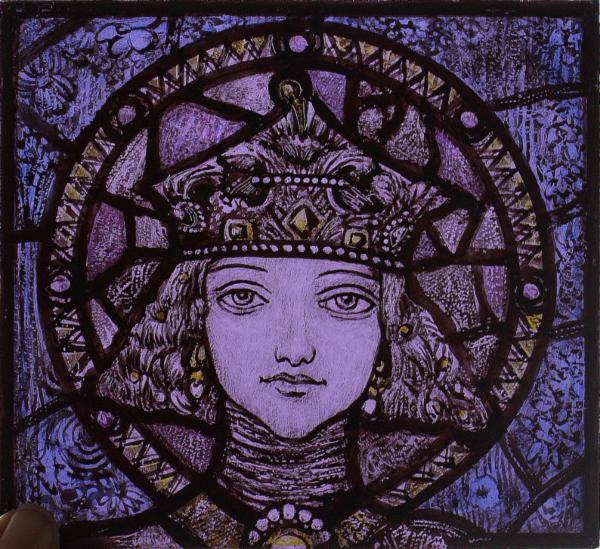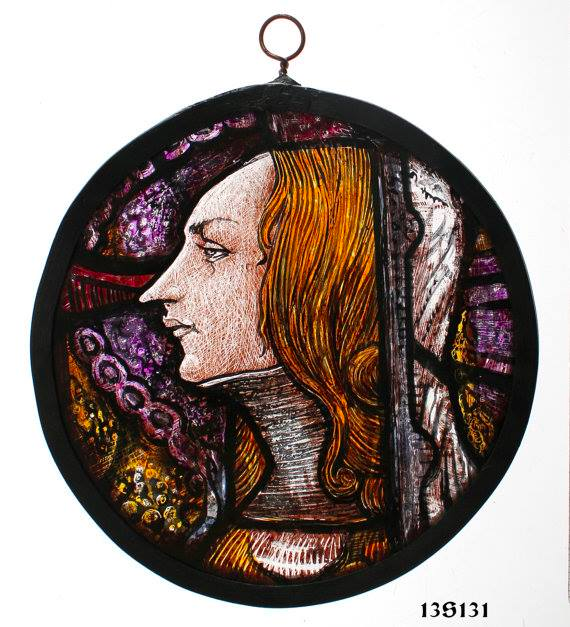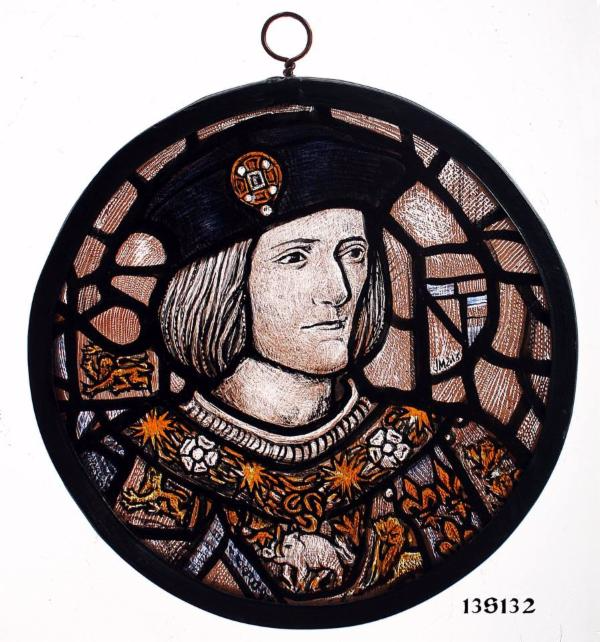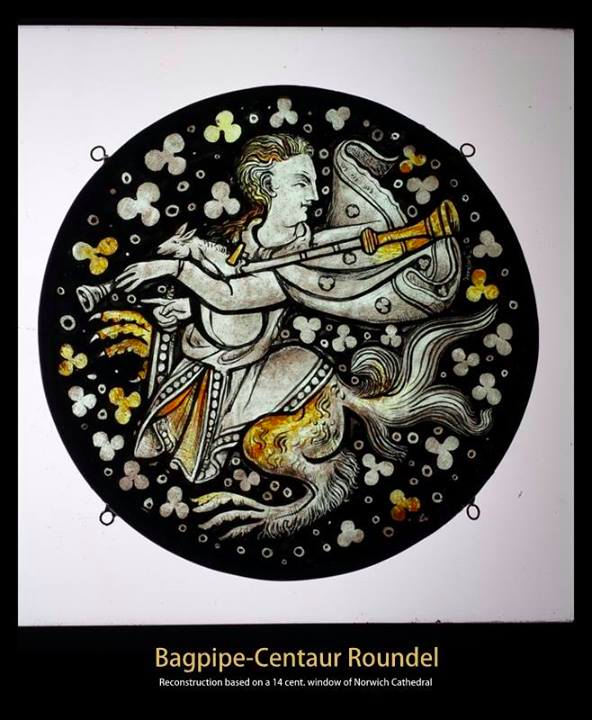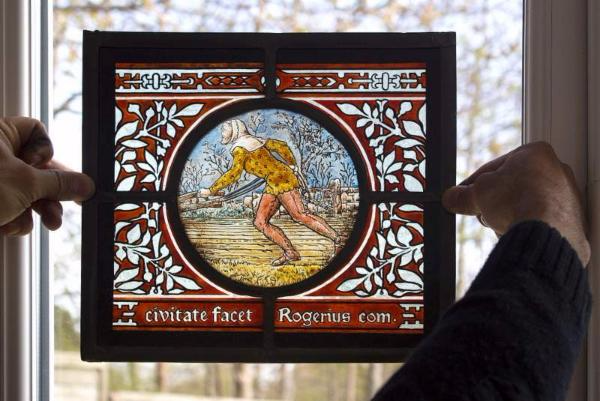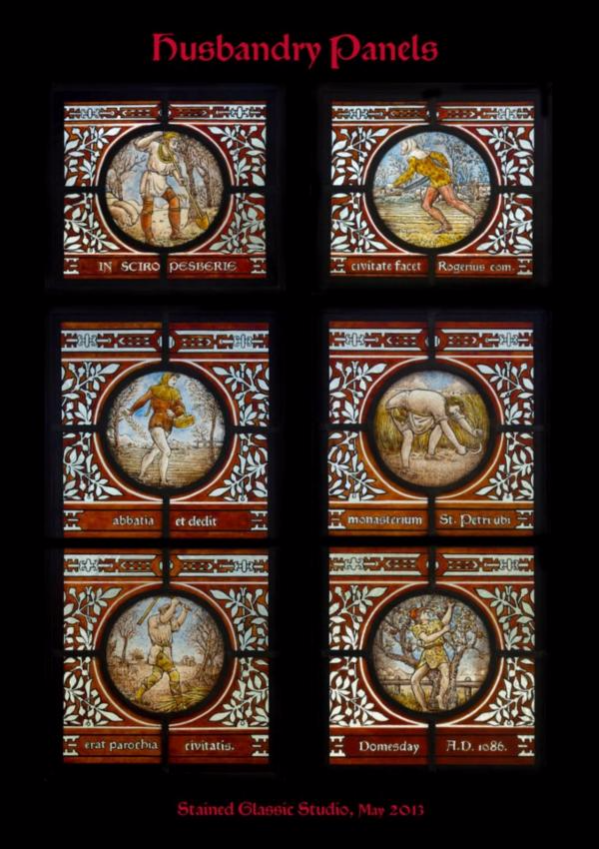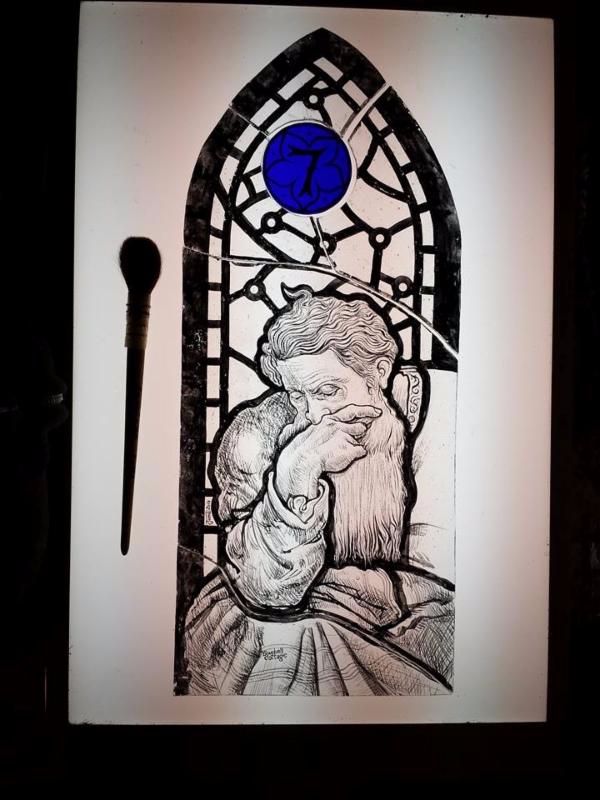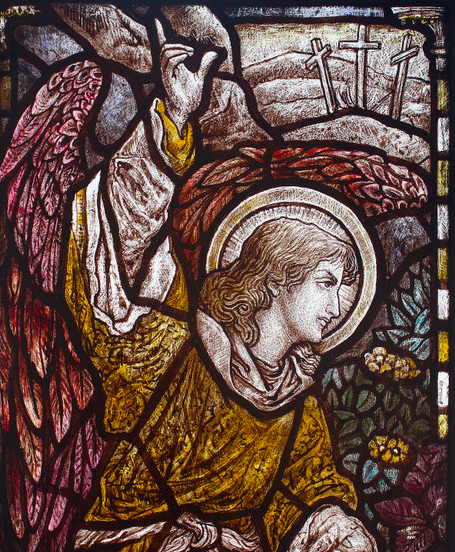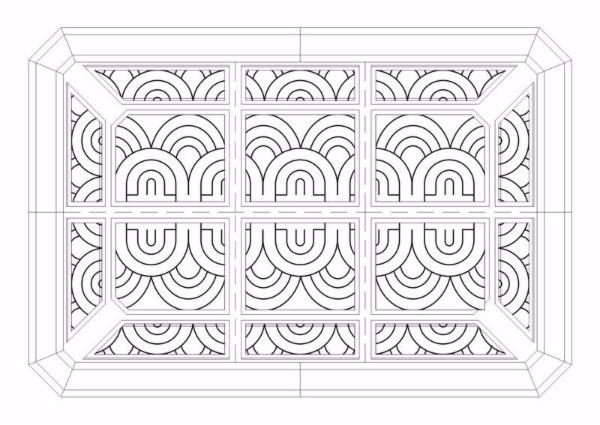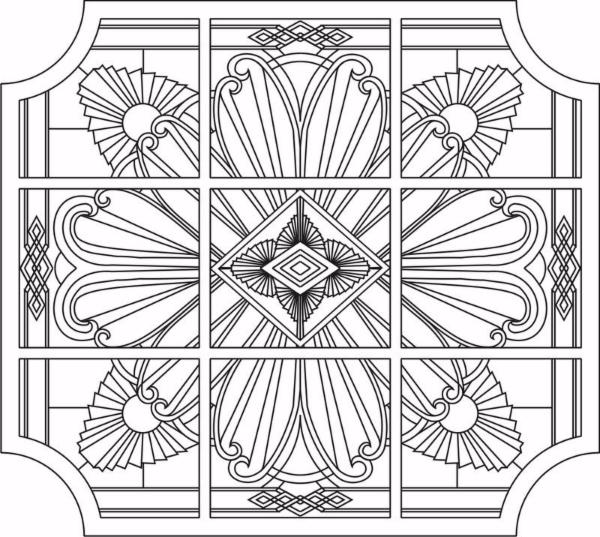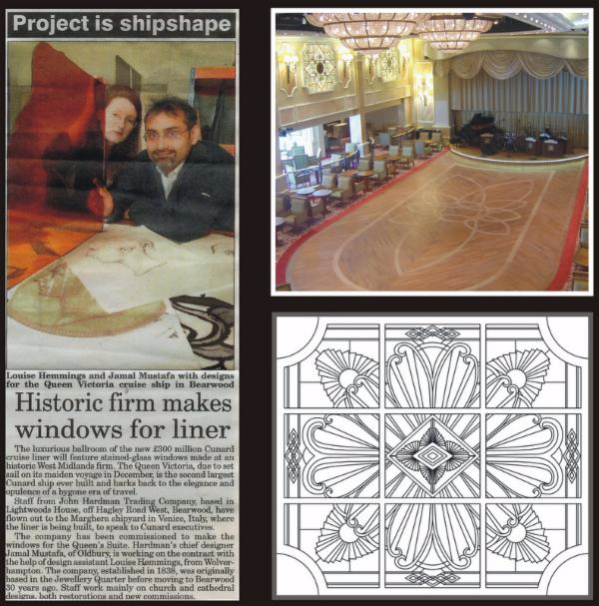Arts & Crafts!
*
Now, he enjoys painting stained glass from his own studio “Stained Glassic’’ (est. 2011) in Birmingham, UK.
*
The Finished Portrait of Marina Squerciati as a young Italian named Melissa Rosa was requested. Judy is very pleased with this. This is part of my many other illustrations for Judy Thomson's upcoming book that is based in Medieval times!!!
*
"Saint George is somewhat of an exception among saints and legends, in that he is known and respected by Muslims, as well as venerated by Christians throughout the Middle East, from Egypt to Asia
Minor. His stature in these regions derives from the fact that his figure has become somewhat of a composite character mixing elements from Biblical, Quranic and folkloric sources. He is said to have
killed a dragon near the sea in Beirut. At the beginning of the 20th century, Muslim women visited his shrine in the area to pray for him.
There is a tradition in the Holy Land of Christians and Muslim going to an Eastern Orthodox shrine of St. George at Beith Jala, Jews also attend the site in the belief that the prophet Elijah was
buried there. This is testified to by Elizabeth Finn in 1866, where she wrote, "St. George killed the dragon in this country Palestine; and the place is shown close to Beirut (Lebanon). Many churches
and convents are named after him. The church at Lydda is dedicated to St. George: so is a convent near Bethlehem, and another small one just opposite the Jaffa gate; and others beside. The Arabs
believe that St. George can restore mad people to their senses; and to say a person has been sent to St. George's, is equivalent to saying he has been sent to a madhouse. It is singular that the
Moslem Arabs share this veneration for St. George, and send their mad people to be cured by him, as well as the Christians"
Lion Statant Regardant:
In heraldry, an attitude is the position in which an animal, fictional beast, mythical creature, human or human-like being is emblazoned as a charge, supporter or crest. Many attitudes apply only to
predatory beasts and are exemplified by the beast most frequently found in heraldry—the lion.
A beast statant (Old French: "standing") is "standing" (in profile toward dexter), all four feet on the ground.
Regardant indicates an animal with its head turned backward towards the sinister, as if looking over its shoulder
The Greyhound:
The name "Greyhound" is generally believed to come from the Old English grighund. "Hund" is the antecedent of the modern "hound", but the meaning of "grig" is undetermined, other than in reference to
dogs in Old English and Old Norse. Its origin does not appear to have any common root with the modern word "grey" for color, and indeed the Greyhound is seen with a wide
variety of coat colors. The Greyhound is the only dog mentioned by name in the Bible; many versions, including the King James version, name the Greyhound as one of the "four things stately" in the Proverbs.
That feeling..... when the person who has paid is very pleased with the work.
It will get installed in their home in Los Angeles CA soon.
*
"Every man's work, whether it be literature, or music or pictures or architecture or anything else, is always a portrait of himself." --- | Samuel Butler |
"Every time I paint a portrait I lose a friend." John Singer Sargent
*
“In Light there is Dark, and in Dark there is Light.” ― Kami Garcia
“Darkness cannot drive out darkness: only light can do that. Hate cannot drive out hate: only love can do that.” ― Martin Luther King Jr.
*
"'The Ancient of Days is the title of a design by William Blake, originally published as the frontispiece to a 1794 work, ''Europe a Prophecy''. It shows Urizen crouching in a circular design with a cloud-like background. His outstretched hand holds a compass over the darker void below. As noted in Gilchrist's ''Life of William Blake'', the design was "a singular favourite with Blake and as one it was always a happiness to him to copy." As such there are many versions of the work extant, including one completed for Frederick Tatham only weeks before Blake's death.''
*
The portrait ''Henry VII of England'' : This portrait is based upon the bust in the collection of the Victoria & Albert Museum in London. The original bust was created by Pietro Torrigiani from the death mask of Henry VII. Henry was a stern and not especially popular English monarch, but his image is among the most life like. It was commissioned to look like that, I did nothing in particular to flatter this subject other than turning it into a stained glass piece.
*
*
THE ROSSETTIAN HANDS: "Rossetti frequently elongates the palms and fingers of his female sitters (particularly those of Jane Morris), exaggerating their lengths sometimes to impossibility.
Rossettian hands are often curled and tensed, lithe and willowy, and are symptomatic of Rossetti’s tendency to stylise and accentuate female body parts — the lips, the hair — for sensual effect.
These curious hands also presumably express the psychological states of the women to whom they belong, or draw the viewer’s attention to particular objects central to the theme or narrative of the
images......"
via Robert @ https://dantisamor.wordpress.com/
*
“Life is so full of unpredictable beauty and strange surprises. Sometimes that beauty is too much for me to handle. Do you know that feeling? When something is just too beautiful? When someone
says something or writes something or plays something that moves you to the point of tears, maybe even changes you.”
― Mark Oliver Everett
“Past and future is determined by what is now…right now! This is why the present is a gift; the only one that ultimately matters most.” ― T.F. Hodge,
This was a 'surprise gift' panel made for the ruby anniversary of a loving couple!!!
*
Its a Medieval stained glass study; The Roundel features a hand-painted angel with bagpipes, detail taken from the beautiful Medieval stained glass windows at Cathedral of Evreux in Normandy France, circa15th century.
*
“Have No Fear of Perfection, You’ll Never Reach it” – (Salvador Dali)
The Creation panel was completed. This was the sixth and last of the series. The set of these six panels is a customised reproduction for The Clochfaen in Wales. The house possesses lots of Arts
& Crafts artefacts including paintings, furniture, sculptures and a lot more... There is a connection between the building and William Morris & Co through the architect, W A S Benson, who was
himself the male model used by Burne Jones in King Cophetua and the Beggar Maid.
*
'The Fates': Burne Jones unfinished drawings turned into stained glass window for The Clochfaen in Wales.
Top three panels below out of the six total.
*
An example of my '''Custom Stained Glass Portrait'' It was a Christmas gift from a father to his daughter. Who later added border around it and leaded into a rectangular panel.
*
This is George (Judy Thomson's husband) depicted as King Richard. Judy is writing her fictional book that is based in the Medieval times. I am her main illustrator for the book. There are many stained glass pieces that I have produced for her and will be used as illustrations in that book. We will be completing the book hopefully within a year.
*
''Harry Clarke (1889–1931) was undoubtedly Ireland's greatest stained glass artist. During his short life Harry created stained glass windows for churches, private dwellings, and commercial venues throughout Ireland and England, as well as in the United States and Australia. Also an illustrator of books for Harrap and Co. in London, Harry illustrated five books that show his undoubted genius in the area of graphic art. In total 174 windows and a small number of panels were created by Harry Clarke.''
Harry Clarke is one of my personal favourites in stained glass and I have reproduced some portraits from his windows to study his style and techniques of painting. Each time I learn something new and it shows how great stained glass artist he was.
*
A small panel depicting King Richard III: Richard III (2 October 1452 – 22 August 1485) was King of England for two years, from 1483 until his death in 1485 in the Battle of Bosworth Field. He was the last king of the House of York and the last of the Plantagenet dynasty. His defeat at Bosworth Field, the decisive battle of the Wars of the Roses, is sometimes regarded as the end of the Middle Ages in England. He is the subject of the play Richard III by William Shakespeare.
*
Bagpipe-Centaur Roundel: "A half-man half-horse is called a centaur, according to the Greek legends they were said to be offspring of Ixion. They had the head arm and a chest resembled a man,
but the legs and the lower-part resembled a horse.
Centaurs preserved a Dionysian connection in the 12th century Romanesque carved capitals of Mozac Abbey in the Auvergne. Centaurs are shown on a number of Pictish carved stones from north-east
Scotland, in the 8th–9th centuries AD (e.g., at Meigle, Perthshire). Though outside the limits of the Roman Empire, these depictions appear to be derived from Classical prototypes."
The roundel is based on a medieval glass of Norwich Cathedral. The purpose was to reconstruct the antique glass as it would have been when freshly painted. The original centaur was made for the
drawing room of the Bishop's Palace back in 14th century. and currently belong to one of the main window along with the other important medieval glass of the Cathedral.
*
How often have you seen a photo that is missing something, thinking, “This is a good photo but I’d make it different somehow.”? Sometimes small things make a big difference. Don’t be afraid to shake things up.
The 6 stained glass panels for the house of 'James' in Shrewsbury.
*
The eagle is used in heraldry as a charge, as a supporter, and as a crest. The eagle is also considered "king of the skies" and messenger of the highest Gods. With these attributed qualities the eagle became a symbol of power and strength in Ancient Rome. Mythologically, it has been connected by the Greeks with the God Zeus, by the Romans with Jupiter, by the Germanic tribes with Odin, by the Judeo-Christian scriptures with those who hope in God (Isa 40:31), and in Christian art with Saint John the Evangelist. The eagle as a symbol has a history much longer than that of heraldry itself. In Ancient Egypt, the falcon was the symbol of Horus, and in Roman polytheism of Jupiter. An eagle appears on the battle standard of Cyrus the Great in Persia, around 540 BC. The eagle as a "heraldic animal" of the Roman Republic was introduced in 102 BC by consul Gaius Marius.[citation needed] According to Islamic tradition, the Black Standard of Muhammad was known as راية العُقاب rāyat al-`uqāb "banner of the eagle" (even though it did not depict an eagle and was solid black). In Christian symbolism the four living creatures of scripture (a man, an ox, a lion, and an eagle) have traditionally been associated with the Four Evangelists. The eagle is the symbol of Saint John the Evangelist.
*
*
The stained glass portrait of Sigmond Freud:
"A man should not strive to eliminate his complexes but to get into accord with them: they are legitimately what directs his conduct in the world." --- Sigmund Freud
*
Below is the result of my search for some 'negative characters' in stained glass:
*
The study of different styles in Medieval stained glass portraits:
*
Say hello to 'Hellespontine Sibyl'' stained glass, Based on Neroccio di Bartolomeo de' Landi's mosaic floor in Siena's Duomo
*
*
The Library ceiling glass
The Queen's Room glass design.
*
Keep Calm And Carry On...................... in The Gothic Revival Font!!!
